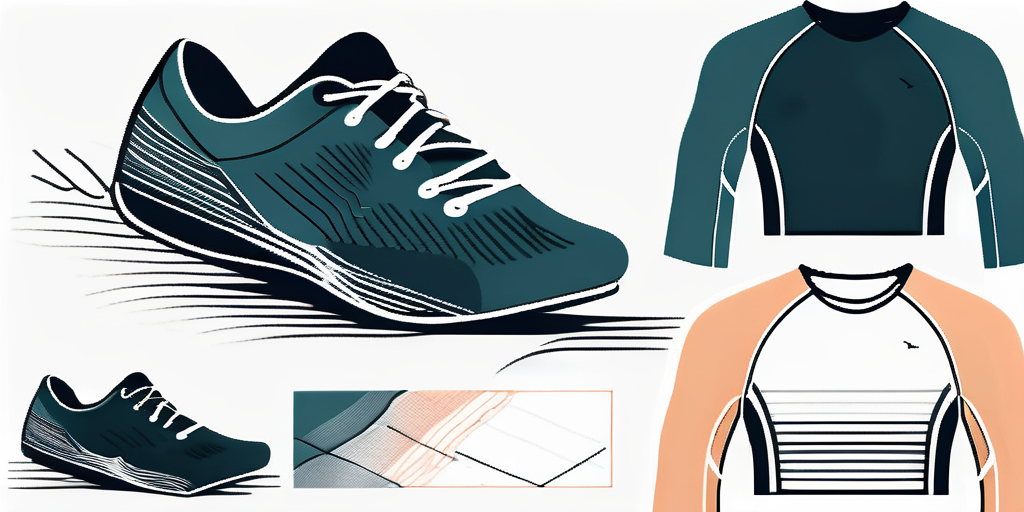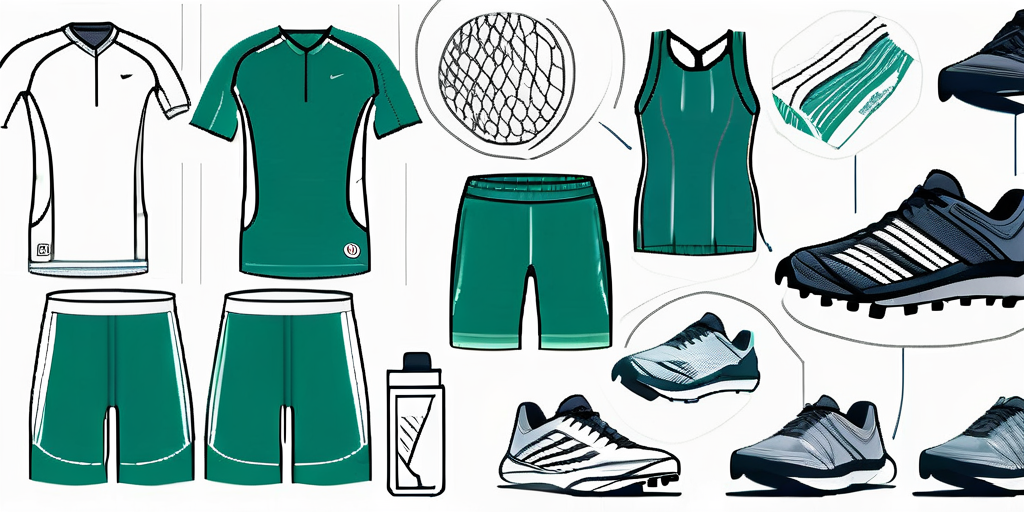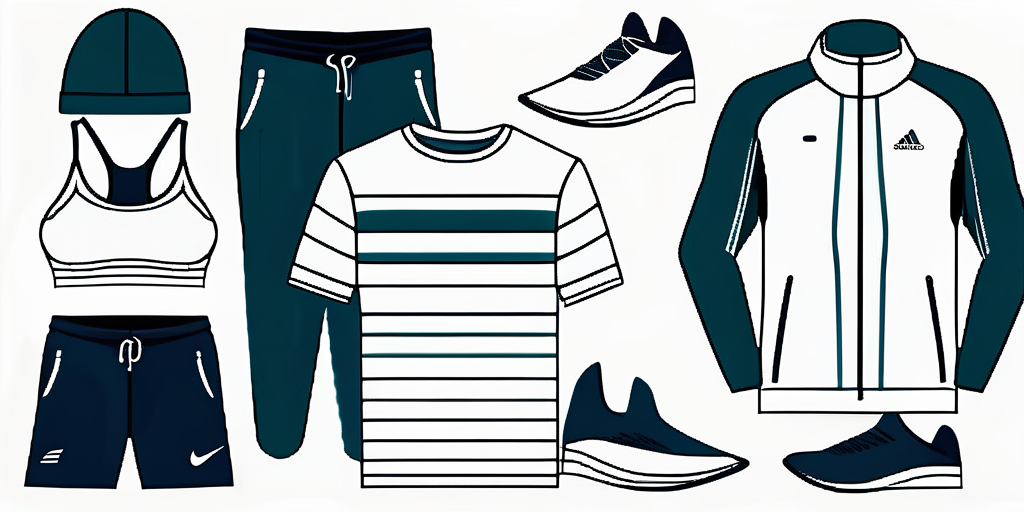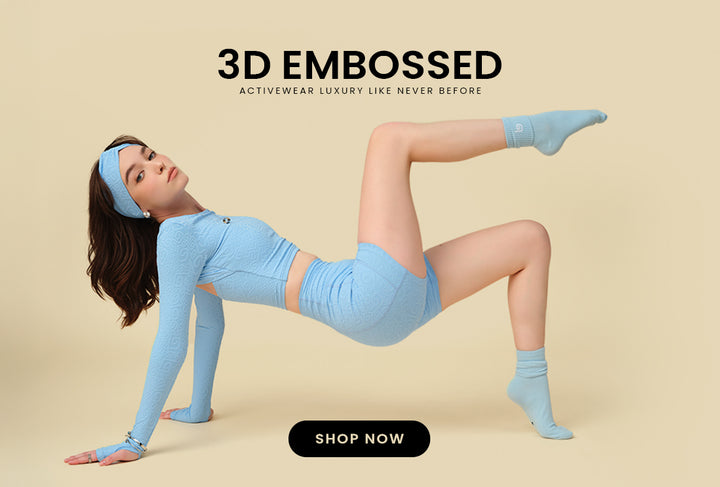Athletic wear has become an essential part of our active lifestyles. From professional athletes to weekend warriors, the right choice of material can make a significant difference in performance and comfort. In this ultimate guide, we will explore the world of athletic cloth materials, understanding their basics, types, properties, and how to choose the right material for your specific needs. We will also delve into the care and maintenance of athletic cloth, ensuring that your investment lasts longer. So, let's dive right in!
Understanding the Basics of Athletic Cloth Material
Before we embark on our journey to explore different athletic cloth materials, let's begin by defining what exactly athletic cloth entails. Athletic cloth refers to the fabrics specifically designed and engineered for sports and physical activities. These fabrics are carefully crafted to provide functionality, durability, and comfort.
Athletic cloth has come a long way since its inception. In the early days, athletes had limited options when it came to choosing suitable clothing for their sporting endeavors. They had to rely on regular clothing materials that were not designed to withstand the rigors of intense physical activities. However, with advancements in textile technology, athletic cloth has evolved to meet the specific needs of athletes.
Defining Athletic Cloth
When it comes to athletic cloth, it is crucial to understand the key characteristics that distinguish it from regular clothing materials. Athletic cloth is typically lightweight, breathable, and moisture-wicking, allowing sweat to evaporate quickly and keeping the body cool and dry during intense workouts or competitions. Additionally, it offers flexibility, ensuring ease of movement without any restrictions.
Lightweight fabrics are a game-changer for athletes. They provide a sense of freedom and agility, allowing athletes to move swiftly without feeling weighed down. These fabrics are often made from synthetic fibers such as polyester or nylon, which are known for their lightweight nature.
Breathability is another essential feature of athletic cloth. During physical activities, the body generates heat, and sweat is produced to cool it down. Without proper ventilation, sweat can become trapped, leading to discomfort and even skin irritations. Athletic cloth is designed with breathable properties, allowing air to circulate and heat to escape, keeping the body comfortable and preventing overheating.
Moisture-wicking is a key attribute of athletic cloth that sets it apart from regular fabrics. This technology enables the fabric to pull moisture away from the skin and onto the outer surface of the fabric, where it can evaporate quickly. By keeping the body dry, moisture-wicking fabrics prevent chafing, irritation, and the growth of odor-causing bacteria.
Importance of Material Choice in Athletic Wear
Choosing the right material for your athletic wear is essential as it directly impacts your performance and overall experience during physical activities. The material determines how well your body can regulate temperature, manage moisture, and withstand the demands of different sports and exercises. The wrong material choice could lead to discomfort, irritation, or even hamper your performance.
When selecting athletic cloth, it is important to consider the specific requirements of your sport or activity. For example, if you are engaging in high-intensity workouts that involve a lot of sweating, opting for moisture-wicking fabrics is crucial to keep you dry and comfortable. On the other hand, if you are participating in outdoor activities, choosing fabrics with UV protection can help shield your skin from harmful sun rays.
Furthermore, the durability of athletic cloth is paramount. Sports and physical activities can be rough on clothing, with constant movement, stretching, and washing. Therefore, choosing fabrics that are known for their durability and resistance to wear and tear is essential to ensure longevity and value for money.
Lastly, comfort should always be a priority when selecting athletic cloth. The fabric should feel soft against the skin, with minimal friction or irritation. Additionally, it should provide the right amount of stretch and flexibility to allow for a full range of motion without any restrictions.
In conclusion, understanding the basics of athletic cloth material is crucial for athletes and fitness enthusiasts. By choosing the right fabric, you can enhance your performance, improve your comfort, and make the most out of your physical activities.
Types of Athletic Cloth Materials
Now that we have a solid understanding of the basics, let's explore the different types of athletic cloth materials available in the market today.
Athletic clothing is designed to provide comfort, flexibility, and performance during physical activities. The choice of fabric plays a crucial role in determining the overall functionality and effectiveness of the garment. When it comes to athletic cloth materials, you will find options in both natural and synthetic fibers.
Natural vs Synthetic Materials
When it comes to athletic cloth materials, you will find options in both natural and synthetic fibers. Natural materials, such as cotton and wool, offer breathability and softness but may not provide efficient moisture-wicking properties. Cotton, for example, is a popular choice for casual athletic wear due to its comfort and ability to absorb sweat. Wool, on the other hand, is known for its insulating properties, making it suitable for colder climates.
On the other hand, synthetic materials like polyester and nylon are known for their moisture-wicking capabilities and durability. Polyester is a versatile synthetic material known for its excellent moisture-wicking properties and durability. It is often used in activewear, especially for activities involving intense sweating. Nylon, another synthetic fabric, offers durability, moisture-wicking capabilities, and abrasion resistance, making it suitable for various sports.
Blends of natural and synthetic fibers are also commonly used in athletic clothing. These blends aim to combine the best qualities of both materials, offering a balance of comfort, breathability, and performance.
Commonly Used Materials in Athletic Wear
Within the realm of athletic cloth, some materials have gained significant popularity due to their specific properties. Let's take a closer look at some commonly used materials:
- Polyester: Polyester is a versatile synthetic material known for its excellent moisture-wicking properties and durability. It is often used in activewear, especially for activities involving intense sweating. Polyester fabrics are lightweight, breathable, and quick-drying, making them ideal for high-performance sports.
- Spandex: Spandex, also known as Lycra or elastane, is added to athletic cloth blends to provide higher stretchability and flexibility. It allows for unrestricted movement and is commonly used in compression garments. The elastic nature of spandex helps the garment to retain its shape and provide a snug fit.
- Nylon: Nylon is another synthetic fabric used widely in athletic wear. It offers durability, moisture-wicking capabilities, and abrasion resistance, making it suitable for various sports. Nylon fabrics are known for their strength and ability to withstand wear and tear, making them a popular choice for activewear.
- Polypropylene: Polypropylene is a lightweight synthetic material that excels in moisture-wicking and quick-drying properties. It is often used in base layers and socks to keep the body dry and comfortable. The moisture-wicking properties of polypropylene help to draw sweat away from the body, keeping the skin dry and reducing the risk of chafing.
- Bamboo: Bamboo fabric is a natural and sustainable option gaining popularity in the athletic wear industry. It offers excellent breathability, moisture-wicking, and odor resistance. Bamboo fabrics are known for their softness and hypoallergenic properties, making them suitable for those with sensitive skin. Additionally, bamboo is a renewable resource, making it an eco-friendly choice for athletic clothing.
With the wide variety of athletic cloth materials available, athletes and fitness enthusiasts can choose garments that suit their specific needs and preferences. Whether it's the moisture-wicking properties of polyester, the stretchability of spandex, or the sustainability of bamboo, there is a material out there to enhance performance and comfort during physical activities.
Properties of Athletic Cloth Materials
Now that we have explored the different types of athletic cloth materials, let's delve deeper into the specific properties that define their performance characteristics.

Breathability and Moisture Wicking
Breathability and moisture-wicking are crucial properties of athletic cloth materials. These properties allow for proper airflow and quick evaporation of sweat, helping to regulate body temperature and keep you dry during physical activities.
When it comes to breathability, athletic cloth materials are designed with special weaves or mesh panels that promote air circulation. This allows heat and moisture to escape from the body, preventing the buildup of sweat and discomfort. Additionally, some materials are treated with moisture-wicking technologies that actively pull sweat away from the skin and onto the fabric's surface, where it can evaporate more easily.
Moisture-wicking is especially important for athletes who engage in high-intensity workouts or sports that involve a lot of running or jumping. By keeping the body dry, these materials help prevent chafing and irritation, allowing athletes to focus on their performance without distractions.
Durability and Flexibility
Athletic cloth materials should be durable enough to handle the demands of rigorous sports and exercises. They should be able to withstand repeated wear, frequent washing, and exposure to various weather conditions.
Manufacturers achieve durability by using high-quality fibers and employing advanced weaving or knitting techniques. For example, synthetic materials like nylon or polyester are known for their strength and resistance to wear and tear. These fabrics can withstand the friction and stretching that occur during intense physical activities.
Flexibility is another critical property of athletic cloth materials. Athletes need garments that allow for freedom of movement without any restrictions. To achieve this, manufacturers often incorporate stretch fibers, such as spandex or elastane, into the fabric. These fibers provide elasticity, allowing the material to stretch and recover without losing its shape.
Thermal Insulation and UV Protection
Depending on the specific sports or outdoor activities, thermal insulation and UV protection can be important factors to consider in athletic cloth materials.
Thermal insulation helps keep the body warm in cold weather. Some athletic cloth materials have insulating properties that trap body heat, creating a layer of warmth. This is particularly beneficial for outdoor activities like skiing or winter running, where maintaining body temperature is crucial for performance and comfort.
UV protection is essential for athletes who spend a lot of time outdoors. Prolonged exposure to the sun's harmful ultraviolet (UV) rays can lead to sunburn, skin damage, and an increased risk of skin cancer. Athletic cloth materials with built-in UV protection help shield the skin from these harmful rays, reducing the risk of sun-related health issues.
Manufacturers achieve UV protection by incorporating special additives or treatments into the fabric. These additives absorb or reflect UV radiation, preventing it from reaching the skin. It's important to note that the level of UV protection may vary depending on the material and its UPF (Ultraviolet Protection Factor) rating.
Choosing the Right Athletic Cloth Material
Now that we understand the different properties of athletic cloth materials, how do we go about choosing the right one for our specific needs?
Material Selection Based on Sport Type
The first consideration in choosing the right athletic cloth material is understanding the requirements of your sport or physical activity. Different sports have varying demands, such as high-impact movements, exposure to extreme weather conditions, or constant sweating. Researching the material preferences for your particular sport will help you make an informed decision.
Considering Personal Comfort and Fit
Personal comfort and fit are also crucial aspects to consider when selecting athletic cloth material. Certain materials may feel more comfortable against your skin, while others may offer a better fit for your body type. Trying different materials and styles can help you determine what works best for you.
Care and Maintenance of Athletic Cloth
Proper care and maintenance of athletic cloth is essential to ensure its longevity and performance. Here are some guidelines to follow:

Washing and Drying Guidelines
Always follow the manufacturer's instructions for washing and drying your athletic wear. Most athletic cloth materials require gentle machine wash or hand wash in cold water. Avoid using fabric softeners as they can hinder the moisture-wicking properties. It is best to air dry or use a low heat setting in the dryer to prevent shrinking or damaging the fabric.
Extending the Lifespan of Your Athletic Wear
To extend the lifespan of your athletic wear, it's recommended to rotate your garments to reduce frequent washing and wear. Pre-treating stains and avoiding excessive use of dryer can also help prolong the life of your athletic cloth.
Conclusion
In conclusion, choosing the right athletic cloth material is crucial for optimal performance and comfort during physical activities. Understanding the basics, exploring the different types of materials, and considering the specific properties are essential steps in making an informed decision. Additionally, taking proper care of your athletic wear will ensure that it stays in top condition for a longer period, allowing you to fully enjoy your active lifestyle. So, go ahead, choose the right material, and enhance your athletic experience!





